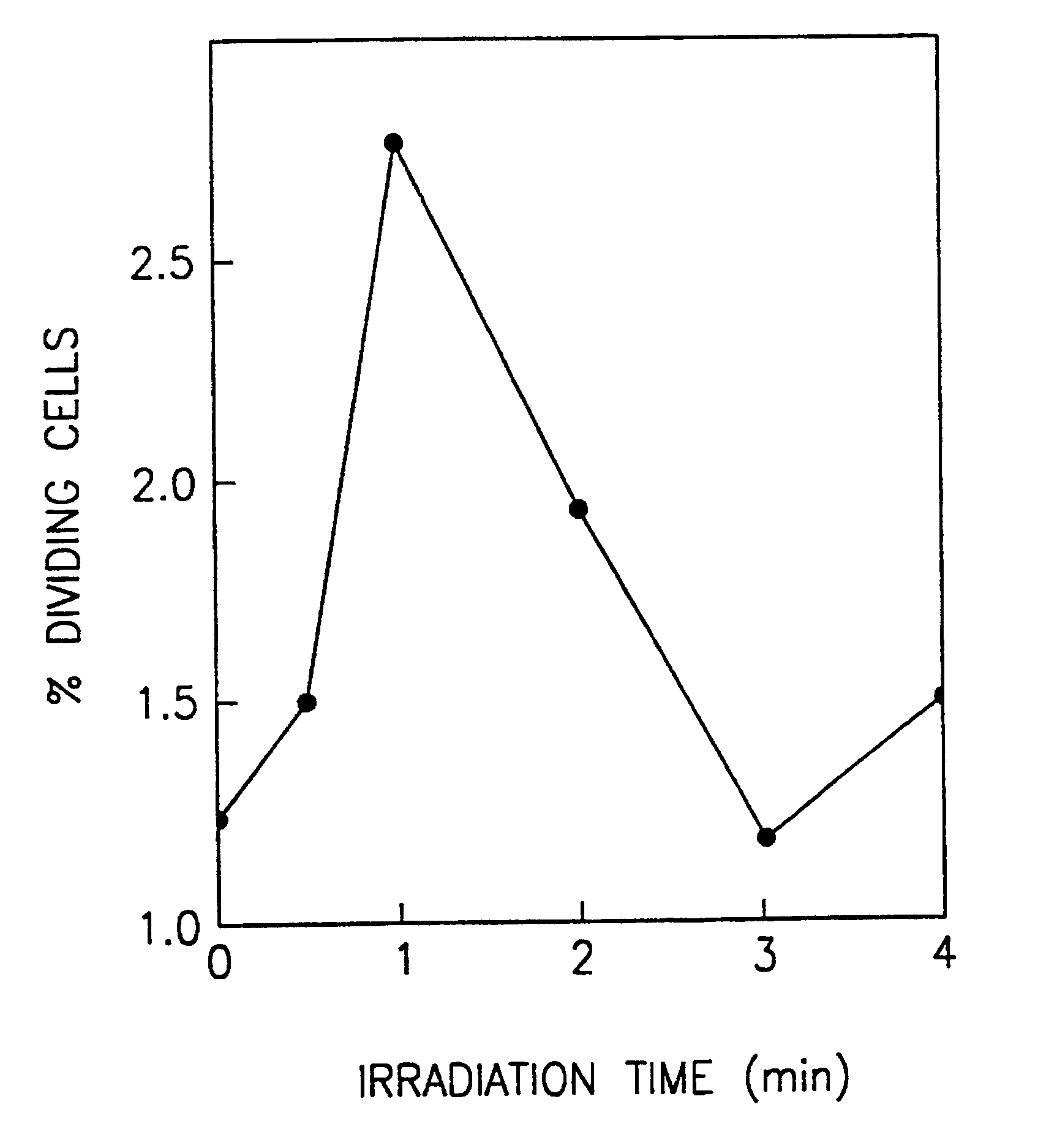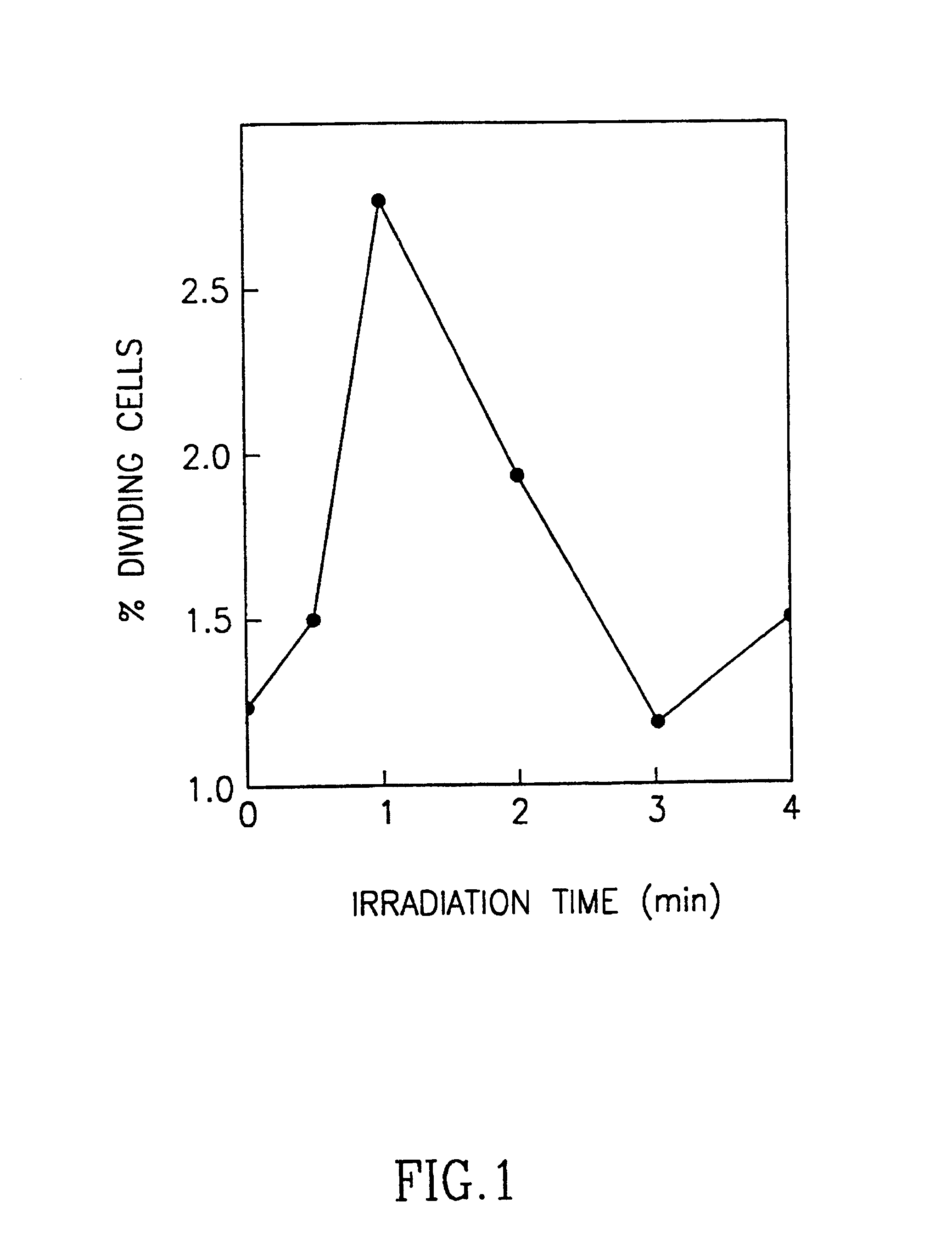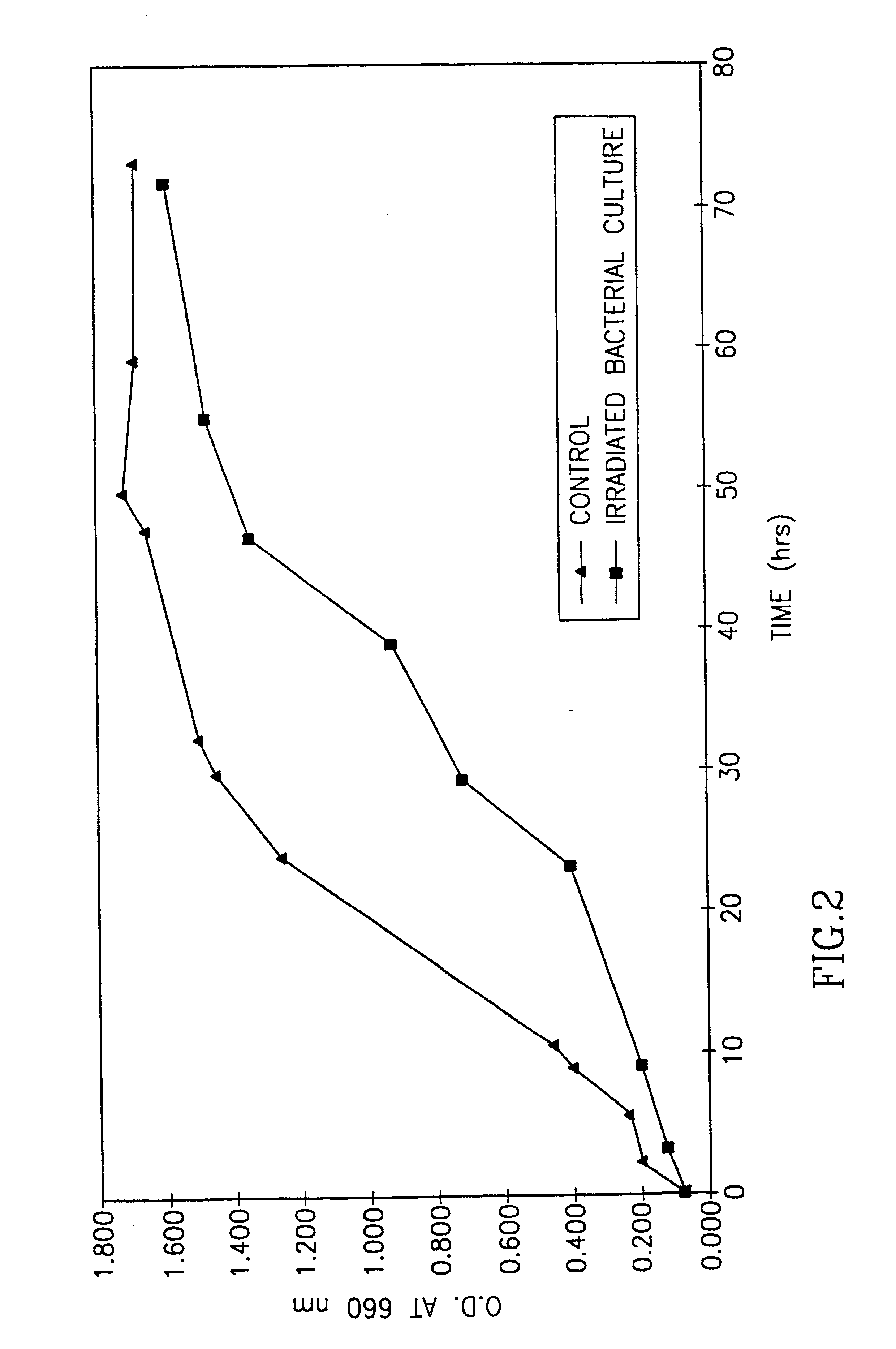Device for light irradiation onto tissue
a tissue and light irradiation technology, applied in the field of tissue light irradiation, can solve the problems of difficult to obtain difficult to achieve the effect of grafting autologous tissue, and difficult to achieve the effect of obtaining sufficient quantities of cultured tissue in three to six weeks
- Summary
- Abstract
- Description
- Claims
- Application Information
AI Technical Summary
Benefits of technology
Problems solved by technology
Method used
Image
Examples
example 2
17 young individuals who had adolescent wounds were treated by irradiation of their facial skin, using a device in accordance with the invention. The treatment of each individual consisted of three irradiations per week, each one with a light intensity of 40 mW / cm.sup.2 for two minutes on the infected area.
The tested individuals reported dramatic improvement in their facial conditions and examination of the individuals showed that after this treatment, their faces had no wounds and no scars.
This clearly demonstrates the beneficial effect of irradiation with a halogen lamp on the treatment of skin wounds or lesions.
example 3
Individuals with adolescent wounds were treated by irradiating their facial skin similarly as in Example 2. A 2-3% H.sub.2 O.sub.2 solution was applied onto the skin shortly before the irradiation.
A marked improvement in the individual's condition was observed.
example 4
50 individuals who had Herpes on their lip were treated twice or three times a day with the light source as described above. Each treatment was at 120 mW / cm.sup.2 for 2 mins. Two to three days after beginning of the treatment, a significant improvement (decrease in severity of infection) was observed.
PUM
 Login to View More
Login to View More Abstract
Description
Claims
Application Information
 Login to View More
Login to View More - R&D
- Intellectual Property
- Life Sciences
- Materials
- Tech Scout
- Unparalleled Data Quality
- Higher Quality Content
- 60% Fewer Hallucinations
Browse by: Latest US Patents, China's latest patents, Technical Efficacy Thesaurus, Application Domain, Technology Topic, Popular Technical Reports.
© 2025 PatSnap. All rights reserved.Legal|Privacy policy|Modern Slavery Act Transparency Statement|Sitemap|About US| Contact US: help@patsnap.com



